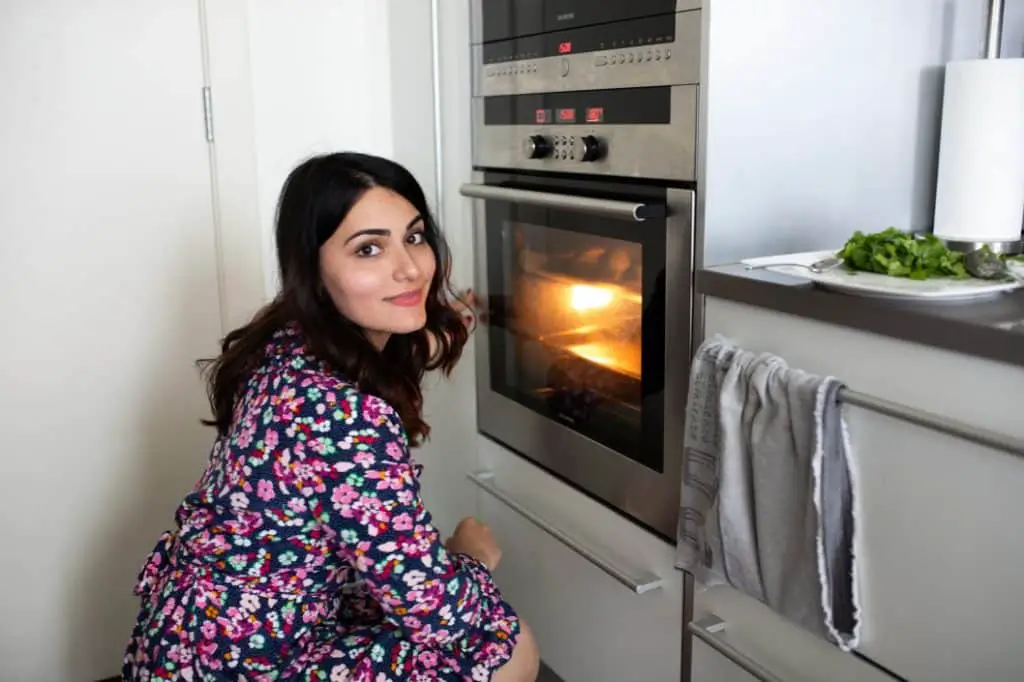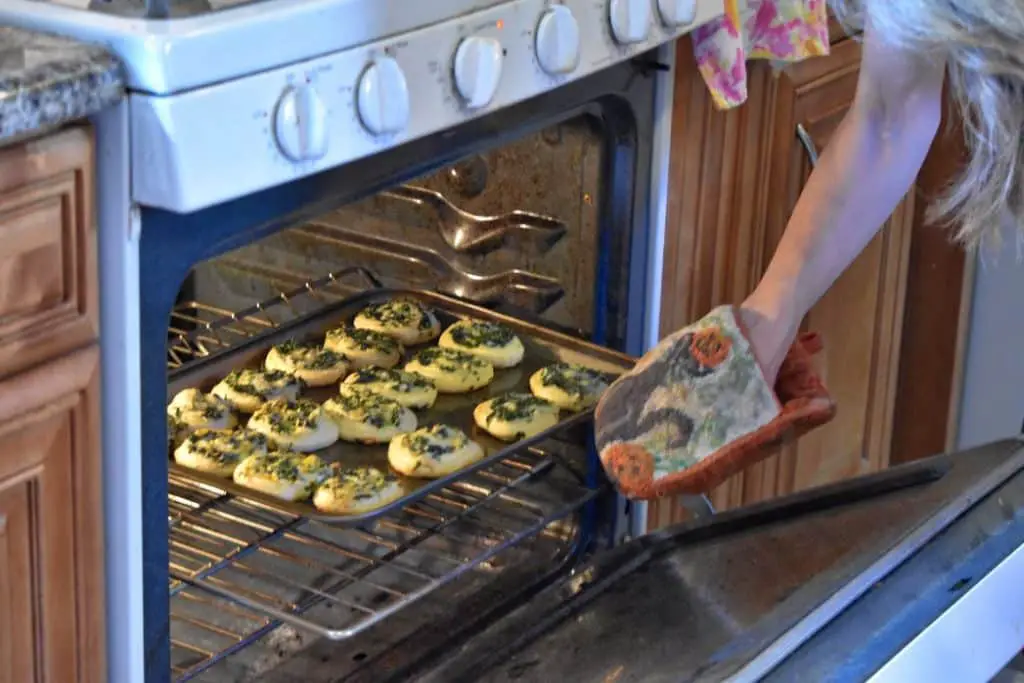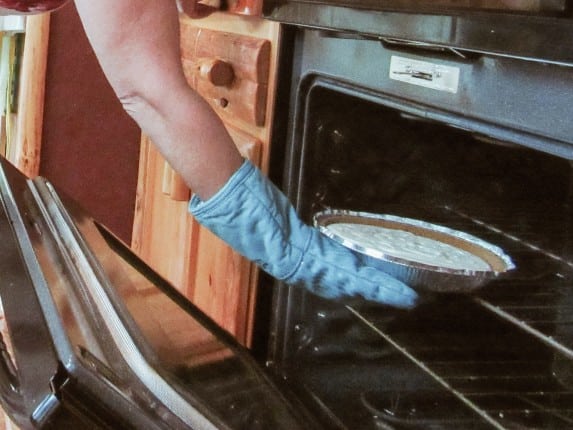All of my ovens before the one I have now would not alert me that they were ready for me to move forward with the cooking. I was always looking up “how long for ‘brand’ oven to preheat” the answers were all over the place, but keep reading, I have general guidelines that work for almost all ovens.
Answer: Most ovens take about 15 minutes to preheat fully. If you want to be absolutely sure, you can wait 20 minutes and then check the oven; for the most accurate results, use an oven thermometer that sits inside the oven. New ovens may have a preheat indicator, and some even regulate the preheating cycle for you.
You may think that is all you need to know about preheating your oven, waiting 15-20 minutes, and start cooking. However, after researching this article, I found many manufacturers recommend a process to ensure the most extended life out of your oven. Following the proper procedure will likely save you energy. I also found some interesting tips I will share about knowing when the process is done and how to know if there is a problem.
So let’s get started by looking at some indicators your oven is done preheating.
How Do I Know When My Oven is Done Preheating?

I know many ovens have this because before I moved out on my own, even the very inexpensive oven my parents had put in their house when they built it had an indicator light to let you know it was done preheating. However, all of the rentals I have lived in up till the last two have not had these features.
It is excellent. You just set the temperature you would like to cook, and then you wait. When ready, the oven beeps, and on some models, an indicator light will toggle.
However, if you don’t have these fancy ovens, there are other ways to know. I will tell you a few of the tricks I used, but first, let’s start with the “right way.”
Get yourself and an in-oven thermometer if you want to know your oven is preheated and not use any crazy tricks or guesswork. These are easy to install, either hanging from a rack or sitting on top of one. If you set it so you can see it from your oven port window, then you can peek in without opening the door and know when you should start cooking.
Now, if you are cheap like me, you might care more about saving a few dollars on the thermometer (and you shouldn’t. They are super cheap, like $10-15), or maybe you like to rough it a little and feel connected to your appliances. I’m not here to judge.
For an electric oven, what I used to do was set a timer for 15 minutes and then crack the door open, keeping my face away from the opening to ensure I would not get blasted with steam. Then I would peer into the oven and see if the elements were still going strong. Not an exact science, but if they are still cranking out the heat, they will be glowing visibly.
Of course, this method is rather terrible and depends on the oven. And the same goes for the following way I would use it on my gas stove, especially in my RV.
For my RV oven, I would set a timer for about 10 minutes; then, when the timer would go off, I could make sure to turn down the TV or podcast whatever I had playing and listen. I would be able to hear the gas turn off. If it got to 15 minutes and I didn’t hear the gas go off, I could crack the door and see if the propane flames were still raging. I also used this method in my first rent house, and again while not perfect, it got the job done.
Now that we have that out of the way, let’s look at some indications of a problem.

What Should I do if it Takes Too Long to Preheat My Oven?
In general, there is a problem if your oven takes more than 20 minutes to preheat. If you have a rented property, you should let your landlord know and document how long it takes and how often you use the oven. If you own your home, it is time to call a repair guy to check things out.
In my RV, often, if things didn’t heat fast enough, I had run out of propane. Still, gas or several electric stuff in an oven can go wrong, leading to long preheat times, wasted energy, and poor cook results, bad enough to make any aspiring foodie sad.
Problems can range from faulty door seals, faulty doors, bad sensors, bad heating elements, bad igniters, and the list goes on from there.
Have you been wondering why even preheat the oven in the first place? Keep reading to find out.

Why Should I Even Preheat My Oven?
Preheating your oven ensures you are not overcooking or drying out the outside while undercooking the inside of your dish. It is also the state most ovens are in when people make recipes which means if you are trying to follow one, you will have better results by emulating the chef that gave you the recipe.
That being said, I found a few sources that pointed out for wet dishes such as casseroles, you may not need to preheat your oven. I recommend trying this out for yourself and seeing how the dishes come out different (and now I have a new video idea I want to try subscribing to our YouTube ).
).
Now that we have some reasons for doing it let’s examine if there is a “right” way to preheat the oven.

Is There a Right Way to Preheat an Oven?
I found a few methods outlined in manufacturer user manuals that will help, depending on your goals.
For some apparent things that honestly I have gotten wrong in the past, for starters, check your oven and remove anything that should not be there. You might also want to remove any racks that you don’t plan on using especially if they are in the way because they will get hot.
Fast Preheating: If you don’t care about potentially wasted energy and want to get to cooking at the absolute fastest time possible. For some ovens, this is a setting that might be called “rapid preheat” and possibly “preheat mode.” What they do is turn on more heating elements to heat the oven faster. If your oven doesn’t have these settings, you can try using the broil mode if your broiler is not in a separate compartment.
Slow Preheating (when using cooking stones): When using cooking stones, you DO NOT want to heat them too quickly. In general, you can preheat your oven in steps moving the temperature up around 100 F per step. This will keep the stones from heating too quickly, allowing any water in them to escape safely. Heating them too quickly could potentially bursting or cracking.


